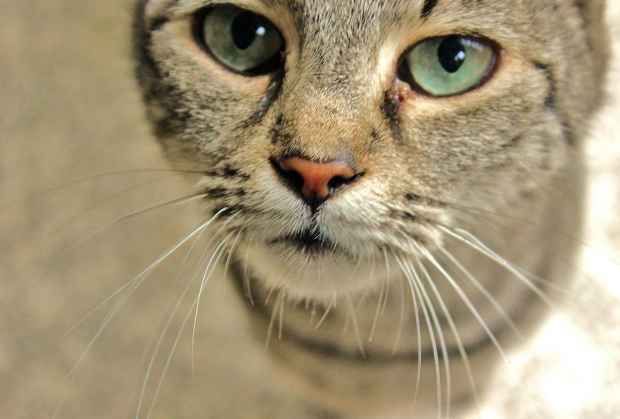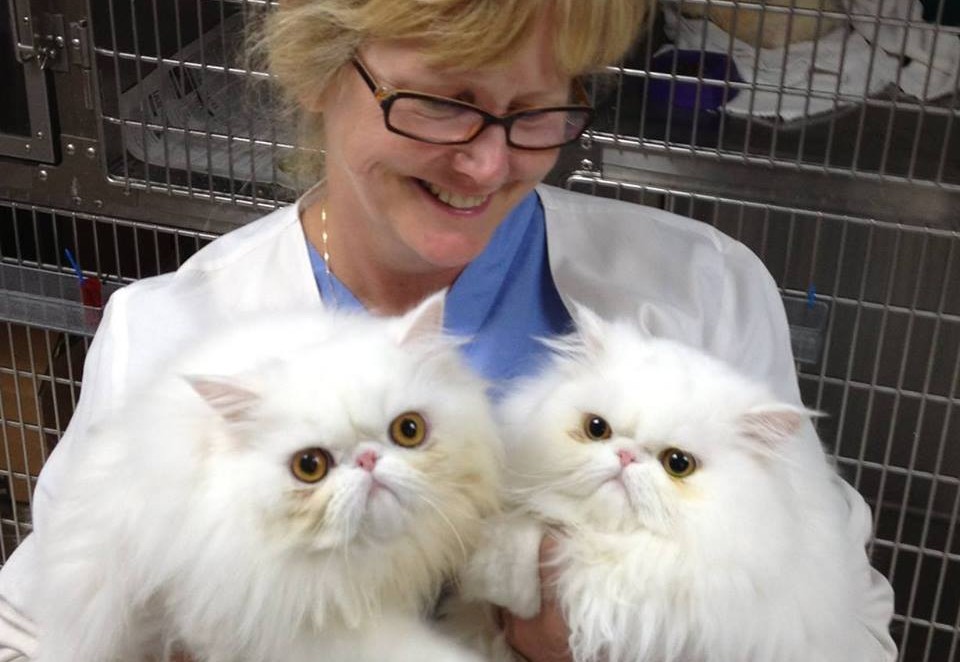Continue reading Dental Health Month: Tips for Keeping Your Cat’s Teeth Clean
Category: Disease Prevention
Dental Health Month: Tips for Keeping Your Dog’s Teeth Clean
Continue reading Dental Health Month: Tips for Keeping Your Dog’s Teeth Clean
Oral Hygiene for Cats
Oral Hygiene for Dogs
 The oral cavity of dogs is a perfect incubator for all kinds of bacteria, partly because the mouth is warm, moist and has significant nutrients present for organisms to grow on. While most are normal and natural, once plaque and calculus (tartar) form on the teeth the normal microbial flora gets out of balance — and if pathogenic organisms proliferate, trouble ensues.
The oral cavity of dogs is a perfect incubator for all kinds of bacteria, partly because the mouth is warm, moist and has significant nutrients present for organisms to grow on. While most are normal and natural, once plaque and calculus (tartar) form on the teeth the normal microbial flora gets out of balance — and if pathogenic organisms proliferate, trouble ensues.
February is Dental Health Month!
There’s no better way to start the year than with a shiny new smile. Pets want good smelling breath just as much as you want them to have it! Stinky breath and brown spots on the teeth are signs of dental calculus build up and gingivitis- things that could lead to serious dental disease- but are very preventable! Continue reading February is Dental Health Month!
Cold Weather Activities for Pets
 Does this cold winter weather of you and your pet feeling a little antsy? If you’re used to spending time outdoors, then chances are you’re both probably starting to feel a little restless by now.
Does this cold winter weather of you and your pet feeling a little antsy? If you’re used to spending time outdoors, then chances are you’re both probably starting to feel a little restless by now.
Making an effort for both you and your pet to stay indoors this winter is great for the mind and body. Your pet will enjoy and appreciate the chance to play and be able to stay active and healthy at the same time. Here are a few ideas to get you started.
Fall Weight Management Tips for Your Pet
 It is officially Fall! This means shorter days, changing leaves, a crisp breeze, football, holidays and food. And with food comes the seasonal weight gain. We seem to find more and more excuses to stay inside our homes as the temperature drops. Add this to the holiday celebrations with the natural tendency to crave comfort food for the colder months, and you have the perfect combination for seasonal weight gain.
It is officially Fall! This means shorter days, changing leaves, a crisp breeze, football, holidays and food. And with food comes the seasonal weight gain. We seem to find more and more excuses to stay inside our homes as the temperature drops. Add this to the holiday celebrations with the natural tendency to crave comfort food for the colder months, and you have the perfect combination for seasonal weight gain.
Overweight pets face many of the same health issues and concerns as people, including: heart disease, type 2 diabetes, bone and joint problems, various forms of cancers, and a shortened life expectancy, just to name a few. Fortunately, with a few simple modifications, you and your pet can avoid the seasonal weight gain.
Canine Rabies: Symptoms, Causes, Diagnosis and Treatment
Continue reading Canine Rabies: Symptoms, Causes, Diagnosis and Treatment
Feline Rabies Treatment and Management
 Feline Rabies is an inflammatory infection that specifically affects the gray matter of the cat’s brain and its central nervous system (CNS). The primary way the rabies virus is transmitted to cats in the United States is through a bite from a disease carrier: foxes, raccoons, skunks, and bats. Infectious virus particles are retained in a rabid animal’s salivary glands to better disseminate the virus through their saliva.
Feline Rabies is an inflammatory infection that specifically affects the gray matter of the cat’s brain and its central nervous system (CNS). The primary way the rabies virus is transmitted to cats in the United States is through a bite from a disease carrier: foxes, raccoons, skunks, and bats. Infectious virus particles are retained in a rabid animal’s salivary glands to better disseminate the virus through their saliva.
Once the virus enters the cat’s body, it replicates in the cells of the muscles and then spreads to the closest nerve fibers, including all peripheral, sensory and motor nerves, traveling from there to the CNS via fluid within the nerves. The virus can take up to a month to develop, but once the symptoms have begun, the virus progresses rapidly.
Intestinal Parasite Screenings for Cats
 Parasites often go unnoticed because they are “silent”. Intestinal parasites that are more common have adapted so well to their hosts (your cat), that they are living in balance and cause no observational health issues. This can always change though, because when the parasites become too numerous the pet’s health is affected. The best approach, because of their silent nature, is to try to keep pets completely free of them before the balance becomes disturbed.
Parasites often go unnoticed because they are “silent”. Intestinal parasites that are more common have adapted so well to their hosts (your cat), that they are living in balance and cause no observational health issues. This can always change though, because when the parasites become too numerous the pet’s health is affected. The best approach, because of their silent nature, is to try to keep pets completely free of them before the balance becomes disturbed.





















